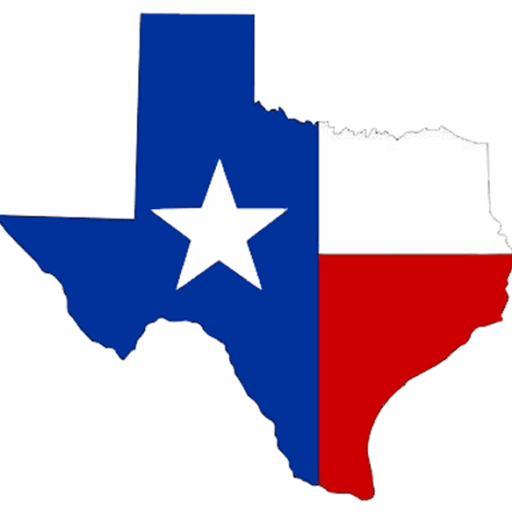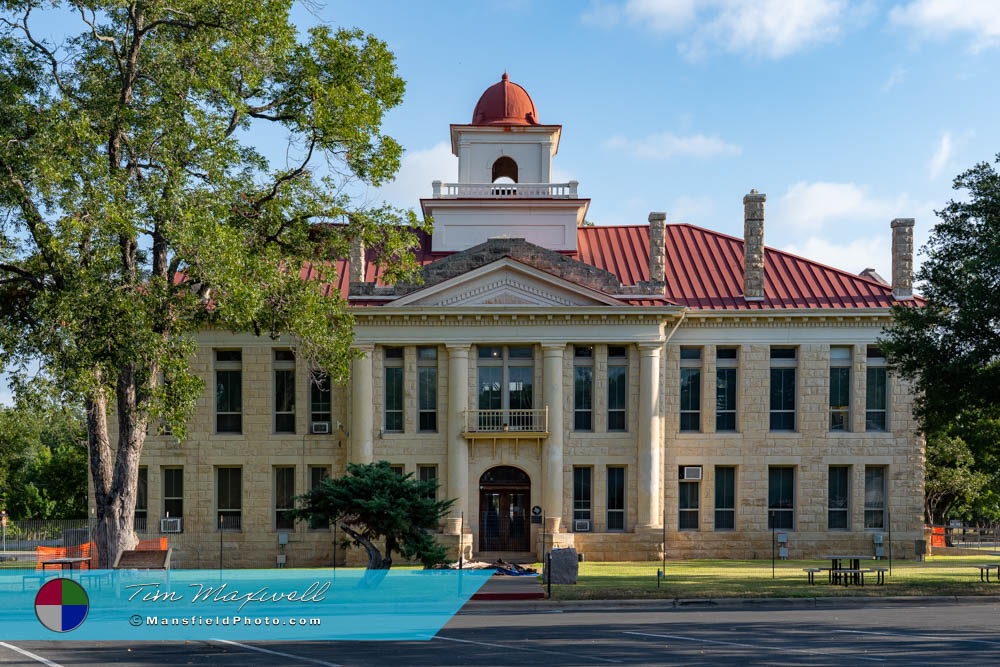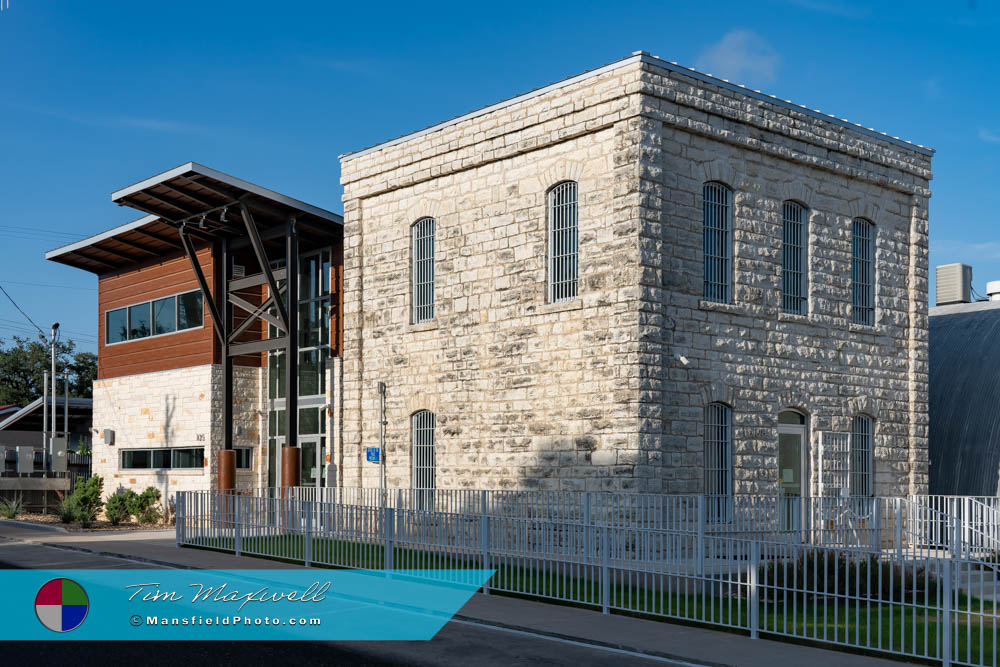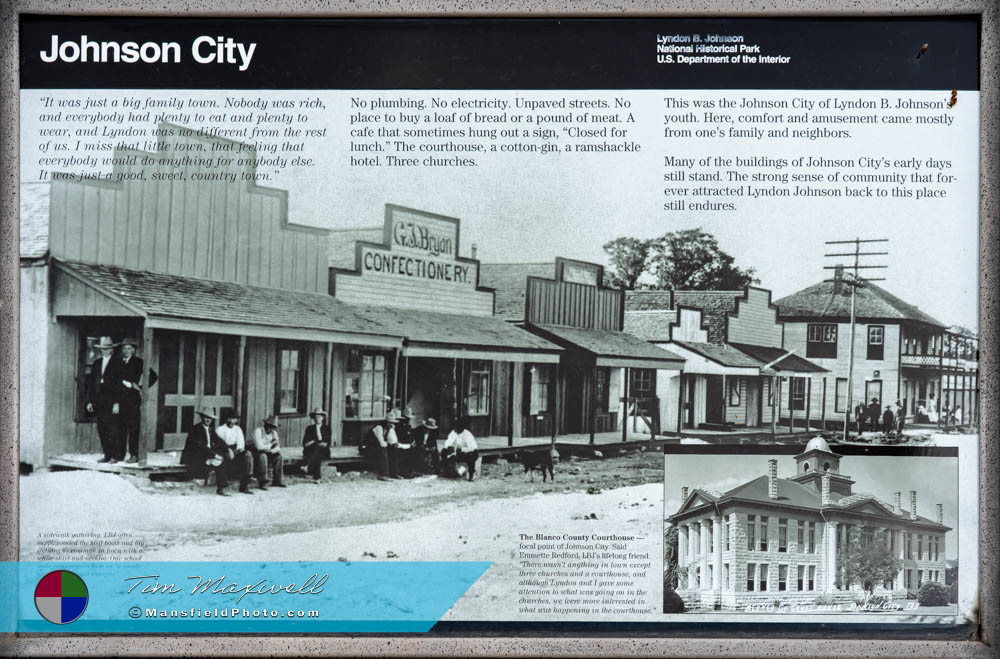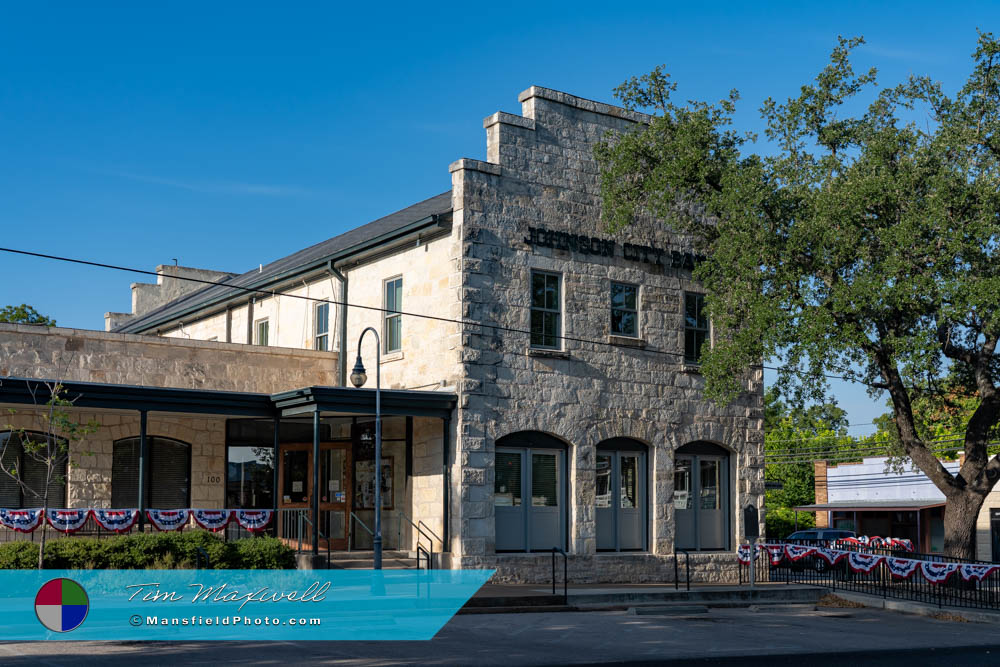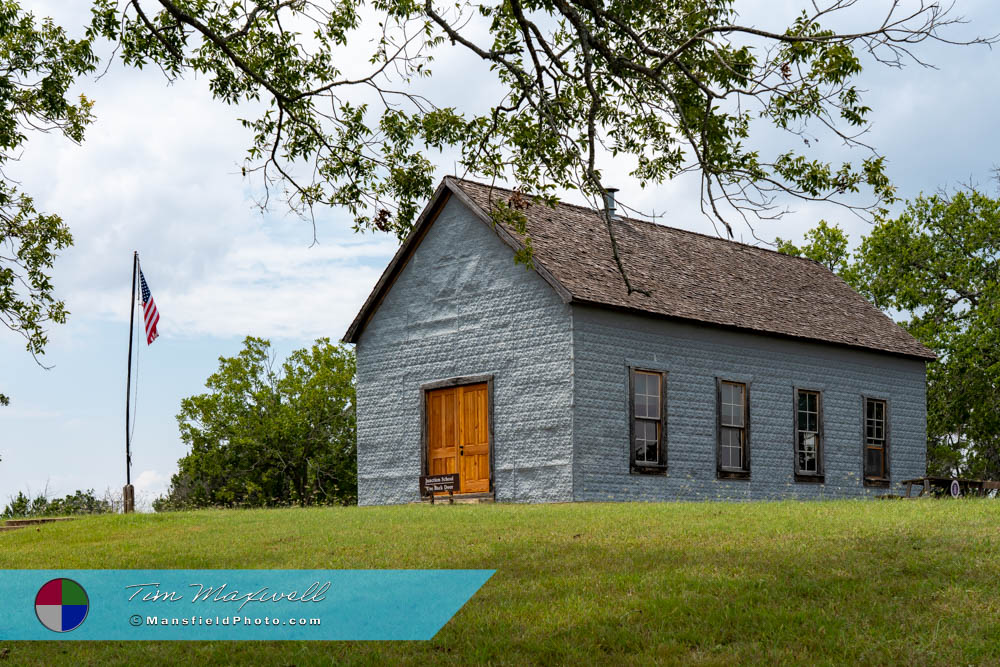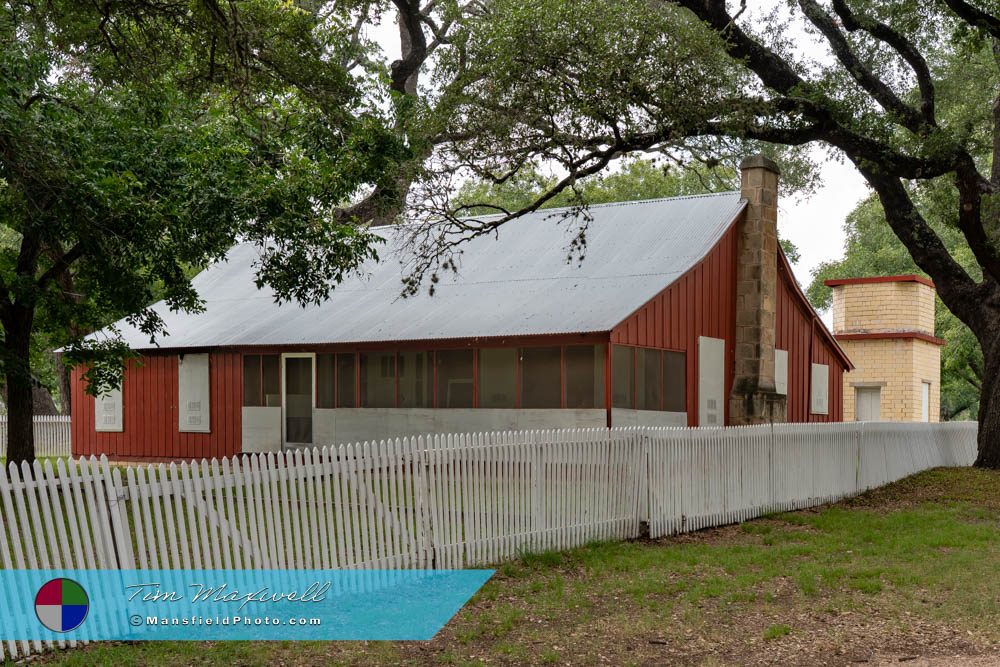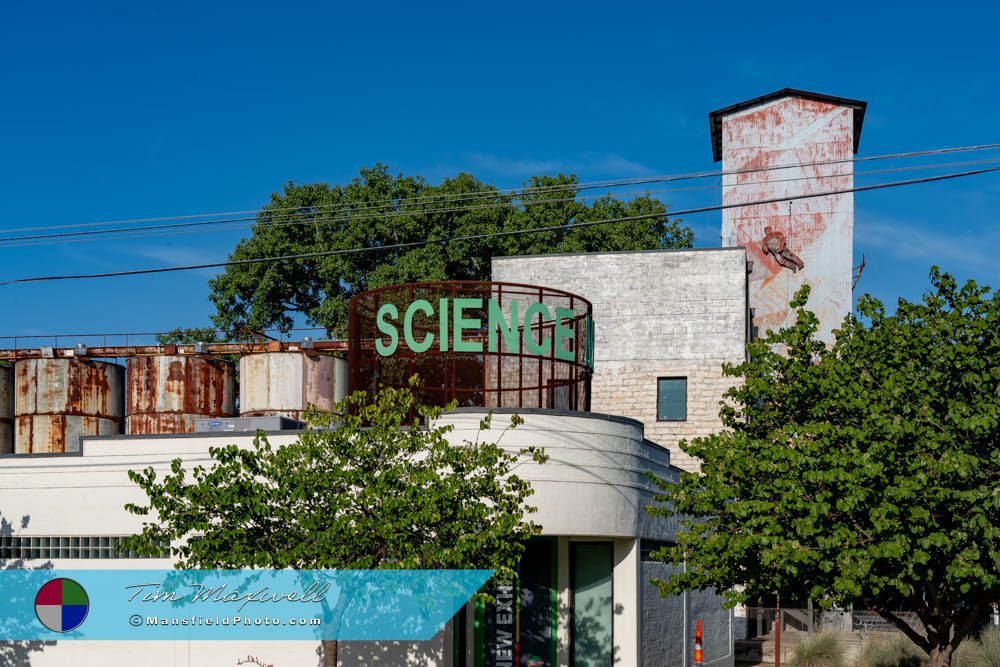Mansfield Photography
Johnson City, Texas
– A Hill Country Town with a Presidential Past.
Johnson City, Texas, is more than just another small town in the Hill Country. It is a place where history, politics, and frontier life come together in fascinating ways. Known as the hometown of President Lyndon B. Johnson, this community holds stories that reach from cattle trails of the 1800s to the White House of the 1960s. Founded in the late 19th century, it remains today a lively mix of historic landmarks, natural beauty, and reminders of the man who would become the 36th president of the United States.
Founding of the Town
The town traces its beginnings to 1879 when James Polk Johnson, a former Confederate soldier and successful cattleman, donated 320 acres along the Pedernales River for its establishment. Johnson was ambitious and envisioned his town becoming the seat of Blanco County government. Though he did not live to see it happen, his dream came true in 1891, when Johnson City replaced Blanco as the county seat following a controversial vote.
James Polk Johnson was part of a family deeply tied to the area’s cattle industry. He grew up in DeWitt County before making his way to Blanco County, where he worked alongside his uncles in the cattle business. Eventually, he branched out on his own, purchasing ranch land and building a legacy that extended beyond ranching to town-building. His leadership and vision established a community that would later be central to both local governance and national history.
A Battle for the County Seat
One of the most dramatic early events in the town’s story was the struggle for the county seat. Blanco, located farther south, had already constructed a large courthouse and believed its status was secure. But Johnson City, backed by its growing community and political support, managed to win the designation in 1891.
This shift was controversial, with citizens of Blanco bitter about losing their courthouse just years after investing in it. Johnson City, however, celebrated the change, and in 1916 the community received its first permanent courthouse. Designed by San Antonio architect Henry T. Phelps and built by Scottish stonemason James Waterston, the Blanco County Courthouse remains a symbol of local pride. Its Classical Revival style, doric columns, and domed cupola give it a striking presence, marking the town square as the center of county life.
Cattle Drives and the Johnson Settlement
Long before politics defined the Johnson family name, cattle shaped their livelihood. In the 1870s, brothers J.T. and Sam Ealy Johnson drove thousands of longhorn cattle from Blanco County northward to Kansas railheads. They operated one of the largest individual trail outfits in the region, often moving herds of up to 3,000 head.
The Johnson Settlement, located just west of town, preserves structures from this era. The site includes barns, cabins, and the Bruckner Barn, built in 1884, which the National Park Service later preserved with the help of funds donated by Lyndon Johnson. Walking the Johnson Settlement Trail today provides a sense of what life was like for the families who worked this rugged land and helped define the economy of early Texas.
James Polk Johnson Building
Among the earliest significant structures in the community is the James Polk Johnson Building.
Built by the founder himself, the building was not only a hub for businesses but also a gathering place for social events, church meetings, and performances. When the county seat shifted, the building briefly served as a courthouse and jail.
Over the decades, it housed banks, general stores, hotels, restaurants, and even, for a time, an office used by former President Johnson. This building reflects the multi-purpose nature of small-town architecture and the central role of community spaces in 19th- and 20th-century Texas life.
The Boyhood of a Future President
Of all the residents who have called the town home, none left a larger mark than Lyndon B. Johnson. Born in 1908 at a farmhouse in nearby Stonewall, he spent much of his youth in Johnson City. His boyhood home, purchased by his parents Sam Ealy Johnson Jr. and Rebekah Baines Johnson in 1913, still stands within the Lyndon B. Johnson National Historical Park.
The modest frame house, built in 1901, was where Johnson grew up, worked in the family garden, and experienced the hardships of rural life. In 1937, he launched his first political campaign for Congress from its east porch. The home today is preserved much as it was in the early 20th century, allowing visitors to step into the world that shaped the president’s outlook on family, education, and hard work.
The Role of Electricity in Changing Rural Life
Another lasting impact tied to the town came in the 1930s, when rural electrification was transforming American life. While cities were quickly gaining access to electricity, many rural areas, including the Hill Country, were left in the dark. Lyndon Johnson, then a young congressman, made bringing electricity to his home district a key campaign promise.
Through his efforts, the Pedernales Electric Cooperative was formed in 1938. It quickly grew into the largest electric cooperative in the nation, stringing thousands of miles of lines across central Texas. Electricity not only improved daily life but also modernized farms, boosted productivity, and created new opportunities for the region. This achievement is remembered as one of Johnson’s earliest and most meaningful political victories.
The Parks Honoring LBJ
The Hill Country contains several sites honoring the president’s legacy, though their similar names can cause some confusion. Within Johnson City itself lies the Lyndon B. Johnson National Historical Park, which includes the boyhood home and Johnson Settlement. Just a few miles west in Stonewall is another portion of the park, which features the LBJ Ranch, often referred to as the “Texas White House.”
In addition, the Lyndon B. Johnson State Park and Historic Site lies nearby across the Pedernales River. It includes exhibits on Johnson’s life, nature trails, and historic structures. Together, these sites form a unique collection of places where visitors can learn about Johnson’s journey from a small-town boy to a world leader.
Present Day Johnson City
Today, the town is both a seat of government and a gateway to Hill Country attractions. The downtown square, anchored by the courthouse, remains a focal point. Visitors often come to tour historic landmarks, explore the Johnson Settlement, or take in exhibits at the National Historical Park.
The surrounding region offers natural beauty, with Pedernales Falls State Park just a short drive away. The park features dramatic waterfalls, hiking trails, and camping areas, making it one of the most visited state parks in Texas. Combined with wineries, art galleries, and small-town hospitality, Johnson City has developed into a cultural and recreational hub.
Interesting Facts
- The town was founded by James Polk Johnson, who was a second cousin to President Lyndon B. Johnson.
- The county seat moved from Blanco to Johnson City in 1891 despite Blanco already having a courthouse.
- The Pedernales Electric Cooperative, headquartered in town, remains one of the largest member-owned electric utilities in the United States.
- The 1916 Blanco County Courthouse is considered one of the finest Classical Revival courthouses in Texas.
- Lyndon Johnson’s first campaign for Congress was launched from the porch of his boyhood home in town.
Conclusion
From cattle drives to the presidency, the history of Johnson City is tied to ambition, determination, and transformation. Founded by James Polk Johnson in 1879, the town rose from a ranching settlement to a county seat and later to a place remembered worldwide as the hometown of a U.S. president. Its courthouses, settlement trails, boyhood homes, and cooperative projects all tell a story of a community that has shaped—and been shaped by—the course of American history.
📸 Interested in More Photos of This Town?
